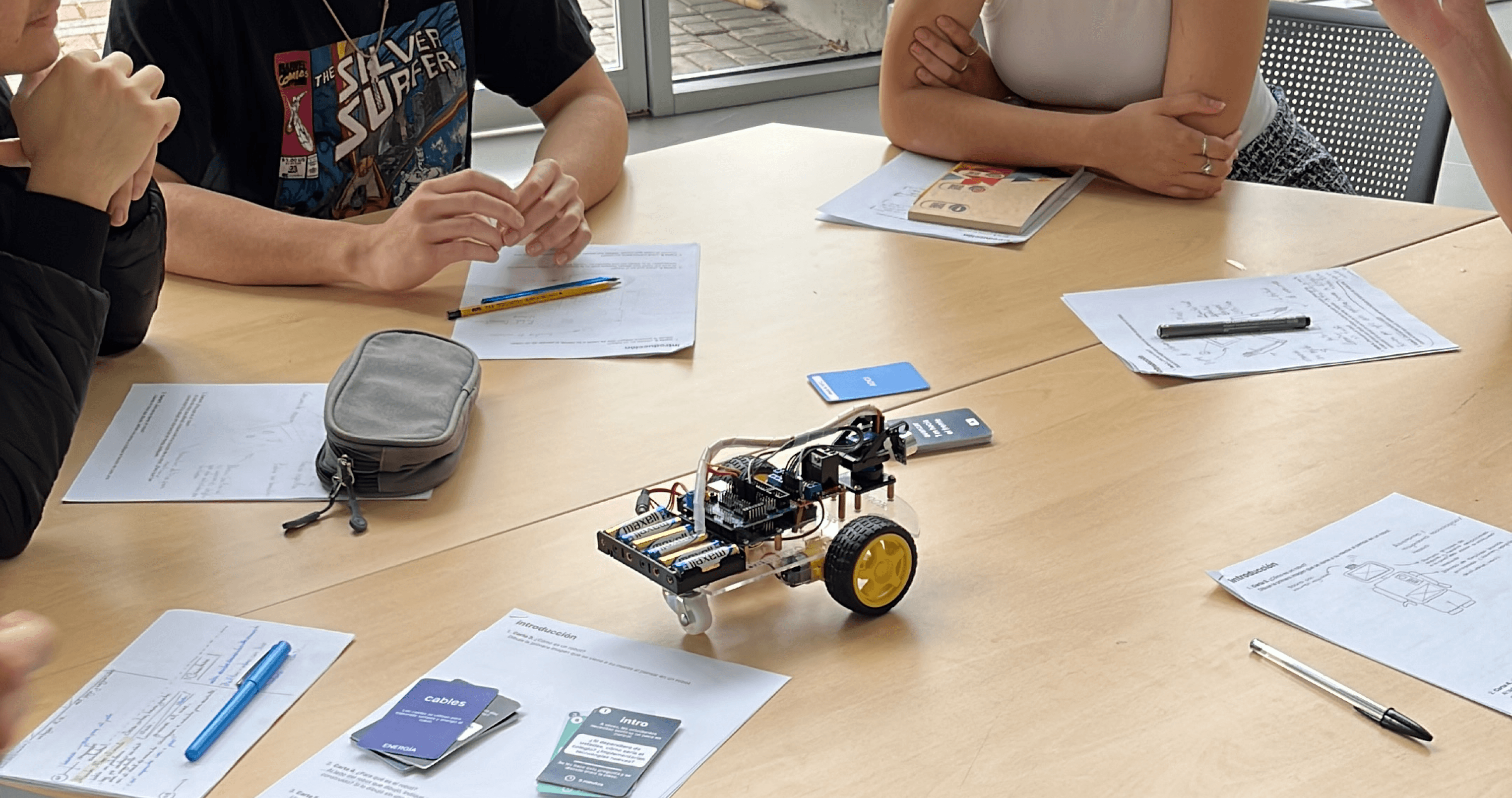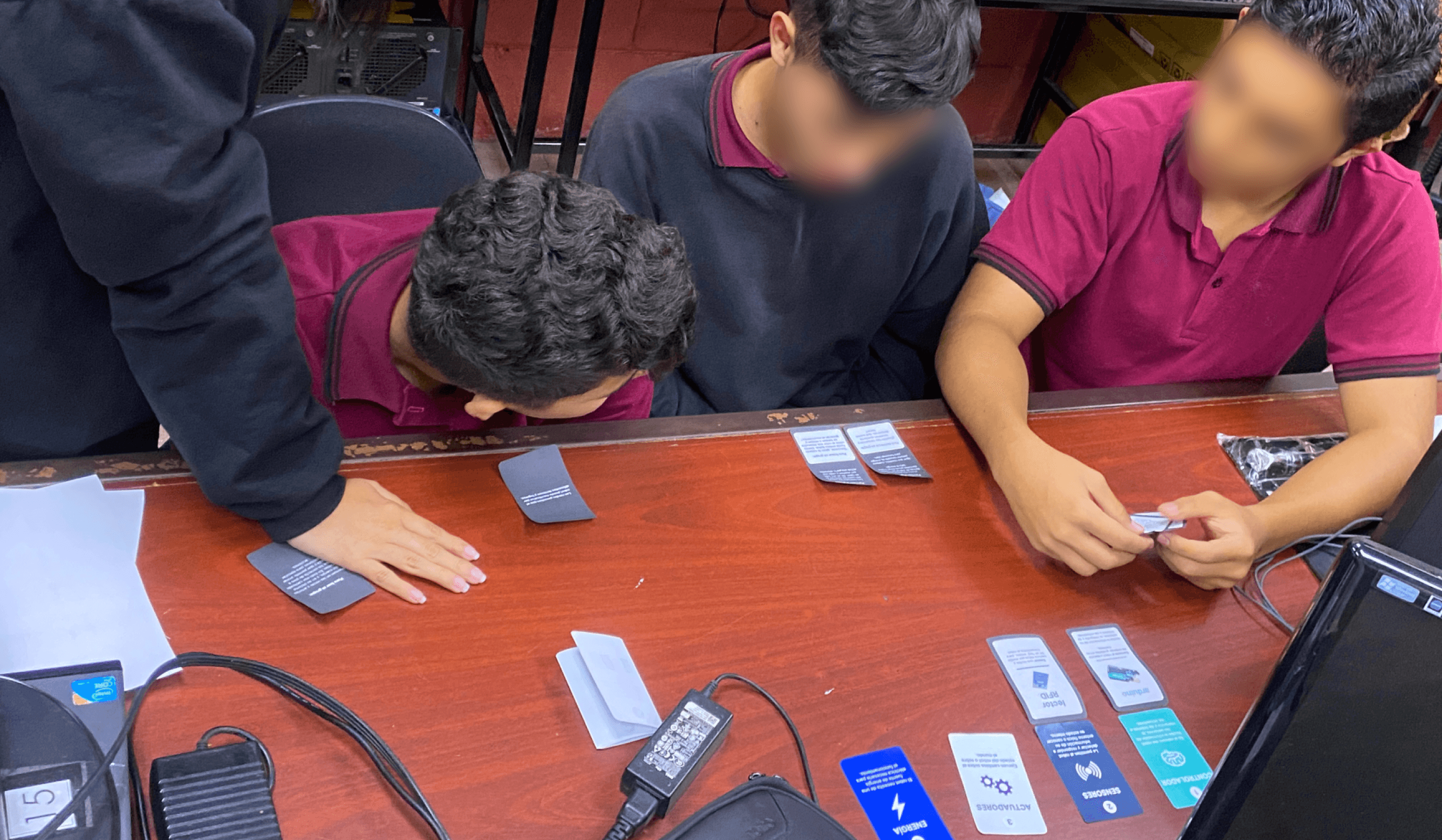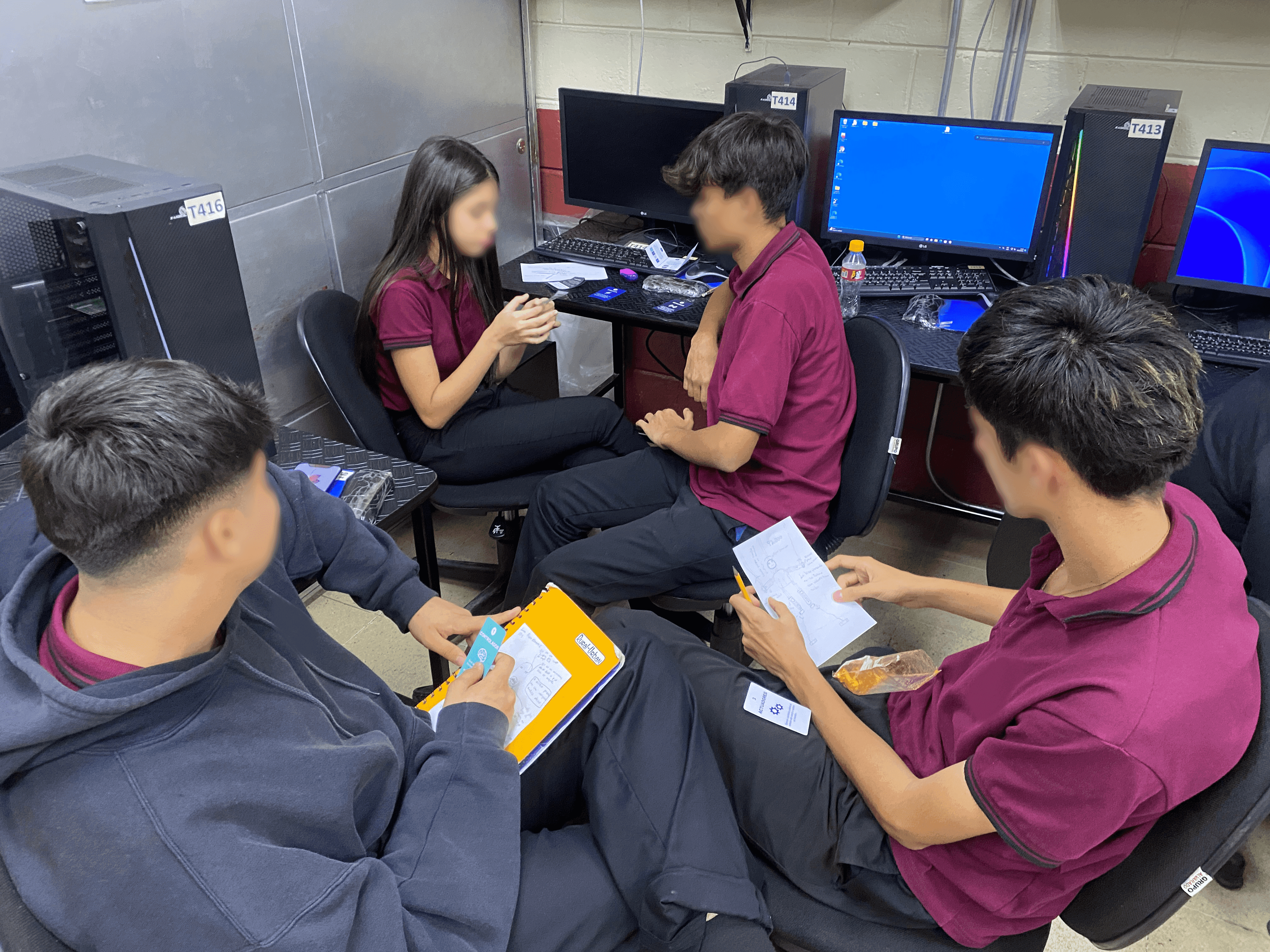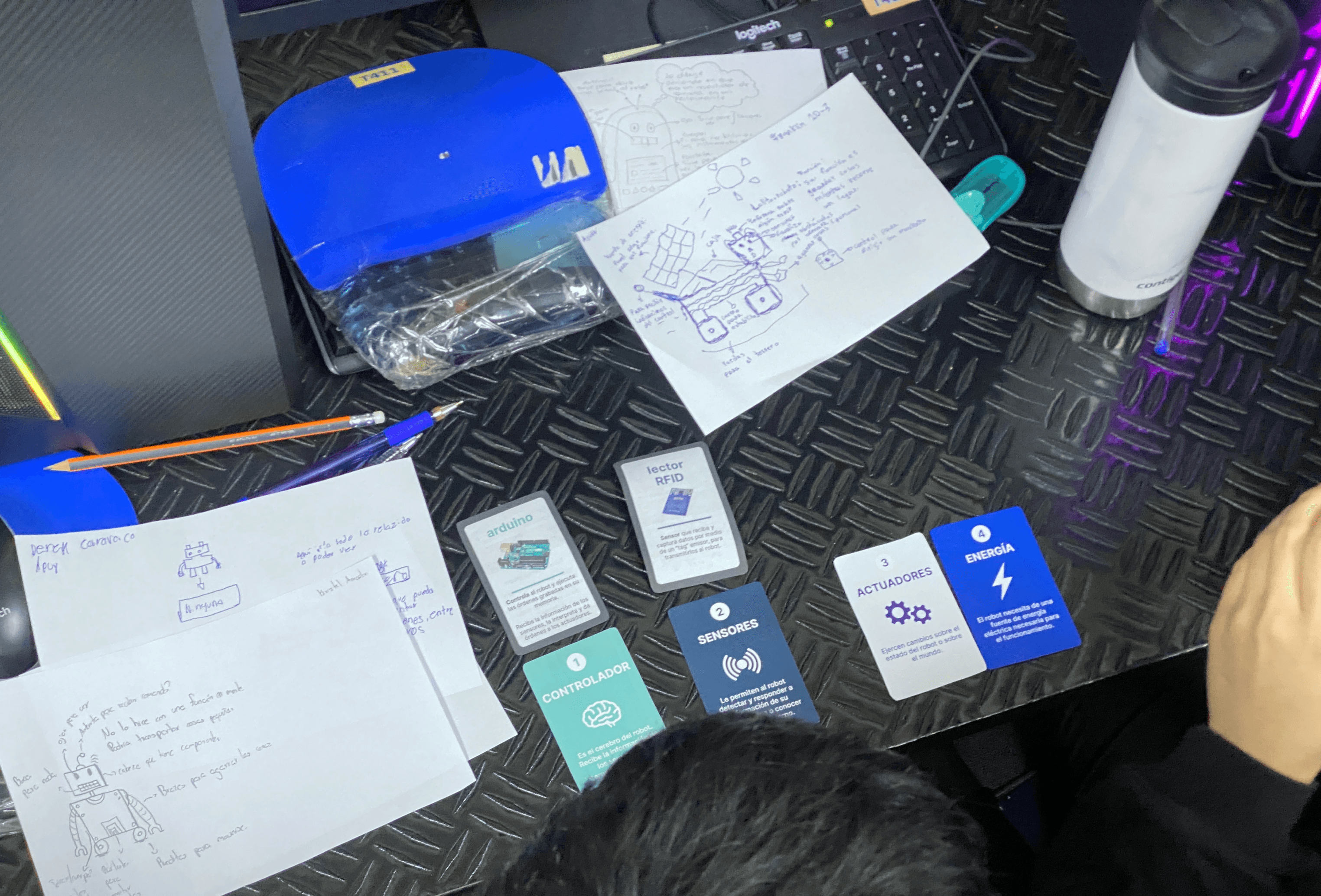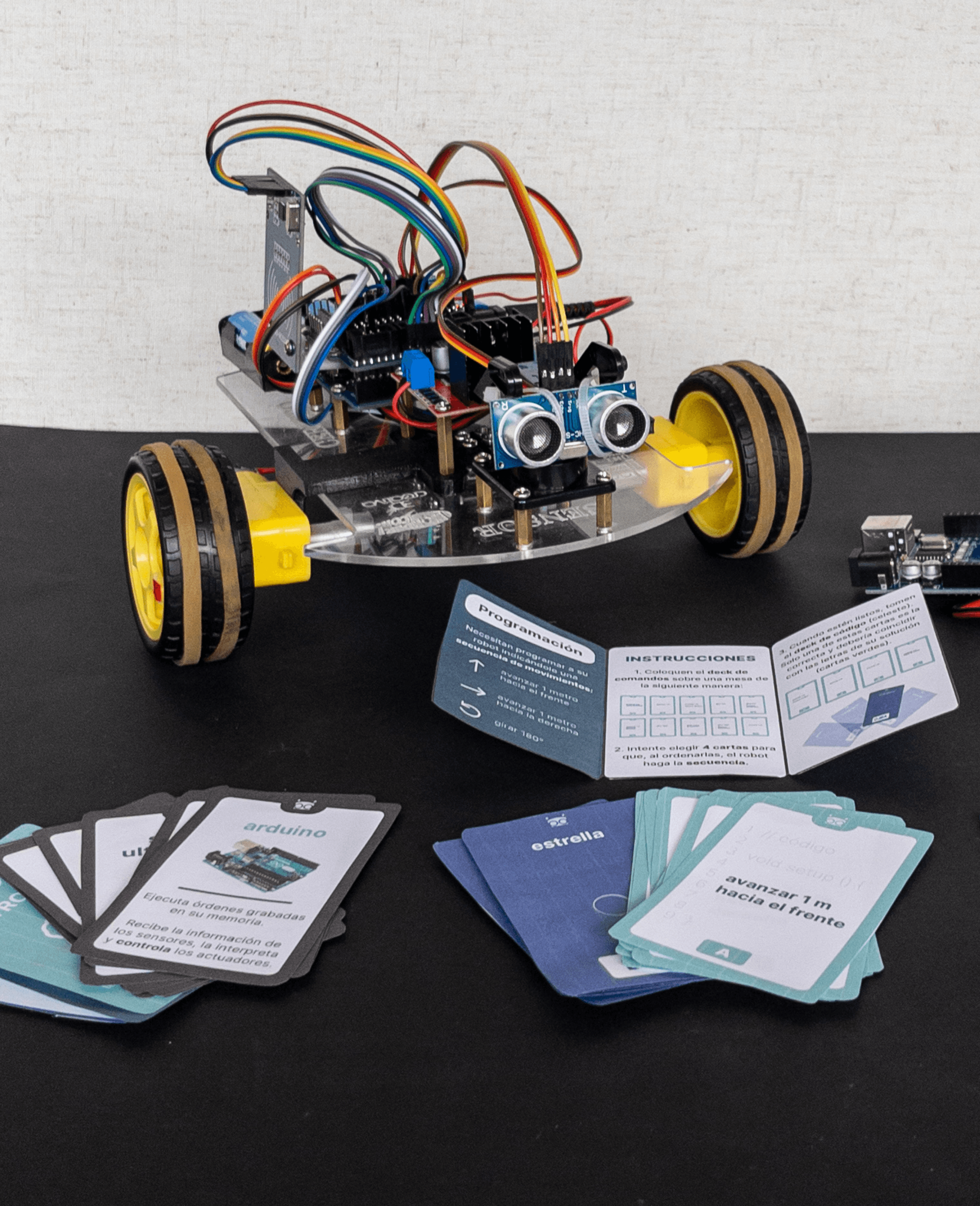

Robotics Learning Experience
Robotics Learning Experience
Research, design, prototyping and testing
Research, design, prototyping and testing
Learning Experience Design
Turns out that classrooms CAN be used for playing. Our card game teaches high school students the basic concepts of robotics through embodied learning.
Turns out that classrooms CAN be used for playing. Our card game teaches high school students the basic concepts of robotics through embodied learning.
Developed by

Juan Ignacio Garro
Industrial / Experience Designer
Juan Ignacio Garro
Industrial / Experience Designer
There is an ever-growing gap that separates students learning in rural and urban areas
While markets are calling upon more technology oriented professionals each day, there are those that are being left behind because of their social and economic backgrounds. This happens because rural areas don’t have access to the necessary resources, such as laptops, smart phones or even internet access.
While markets are calling upon more technology oriented professionals each day, there are those that are being left behind because of their social and economic backgrounds. This happens because rural areas don’t have access to the necessary resources, such as laptops, smart phones or even internet access.
But what about those who do have the necessary means?
Well, it turns out that in Costa Rica, most of them won’t pursue STEAM careers because they won’t have had their first contact with subjects such as robotics until they are university students. On top of this, when being introduced to said subjects, the majority have always hit a barrier because of the way it is taught.
Well, it turns out that in Costa Rica, most of them won’t pursue STEAM careers because they won’t have had their first contact with subjects such as robotics until they are university students. On top of this, when being introduced to said subjects, the majority have always hit a barrier because of the way it is taught.
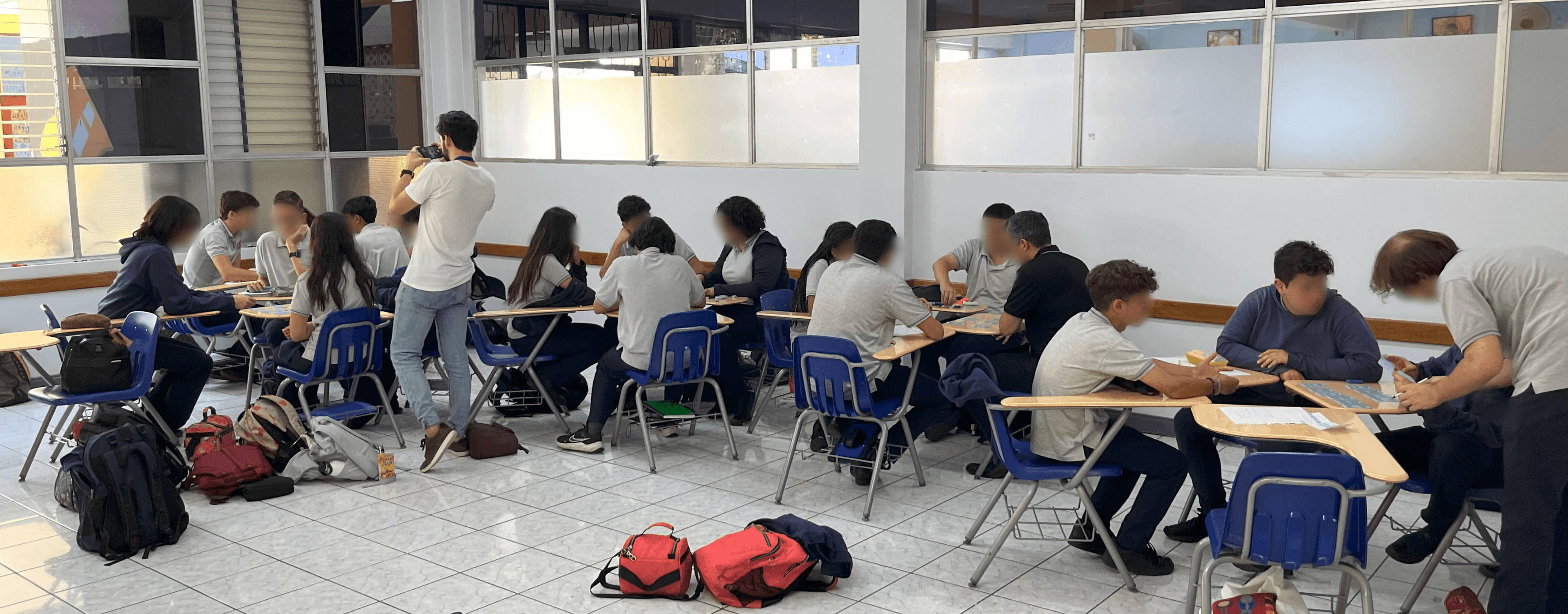

We set out to public, private and semi-private schools to learn more from students, teachers and their contexts, identifying the underlying issues that were at play.
We set out to public, private and semi-private schools to learn more from students, teachers and their contexts, identifying the underlying issues that were at play.
students
students
pain points
pain points
needs
needs
Difficulty identifying errors and patterns.
To implement strategic activities that will focus on problem solving.
Robots required to be assembled, but it doesn’t come as easy to all students
To include manuals as if they were playing with Legos, so that tey have a comprehensive set of steps to follow.
To include manuals as if they were playing with Legos, so that tey have a comprehensive set of steps to follow.
IT teachers
IT teachers
pain point
pain point
needs
needs
Are not properly trained in robotics and have trouble successfully introducing subjects in their class and getting students to engage.
To design teacher guides that they can follow as facilitators, without being experts in the subject.
They feel intimidated by robotics and other modern IT applications.
To craft activities that progressively grow in difficulty, starting with the basics and introducing little complexity at the beggining.
The solution would be game-based.
We devised a game that required nothing but paper and low-cost robotics kits, that are sold for $30 dollars each; the most affordable in the market. The final result came in the form of 3 games card games, which were part of a single story that the teachers could easily tell by following a slide presentation. Each game had the purpose of introducing a topic that built on top of the last one.
We devised a game that required nothing but paper and low-cost robotics kits, that are sold for $30 dollars each; the most affordable in the market. The final result came in the form of 3 games card games, which were part of a single story that the teachers could easily tell by following a slide presentation. Each game had the purpose of introducing a topic that built on top of the last one.


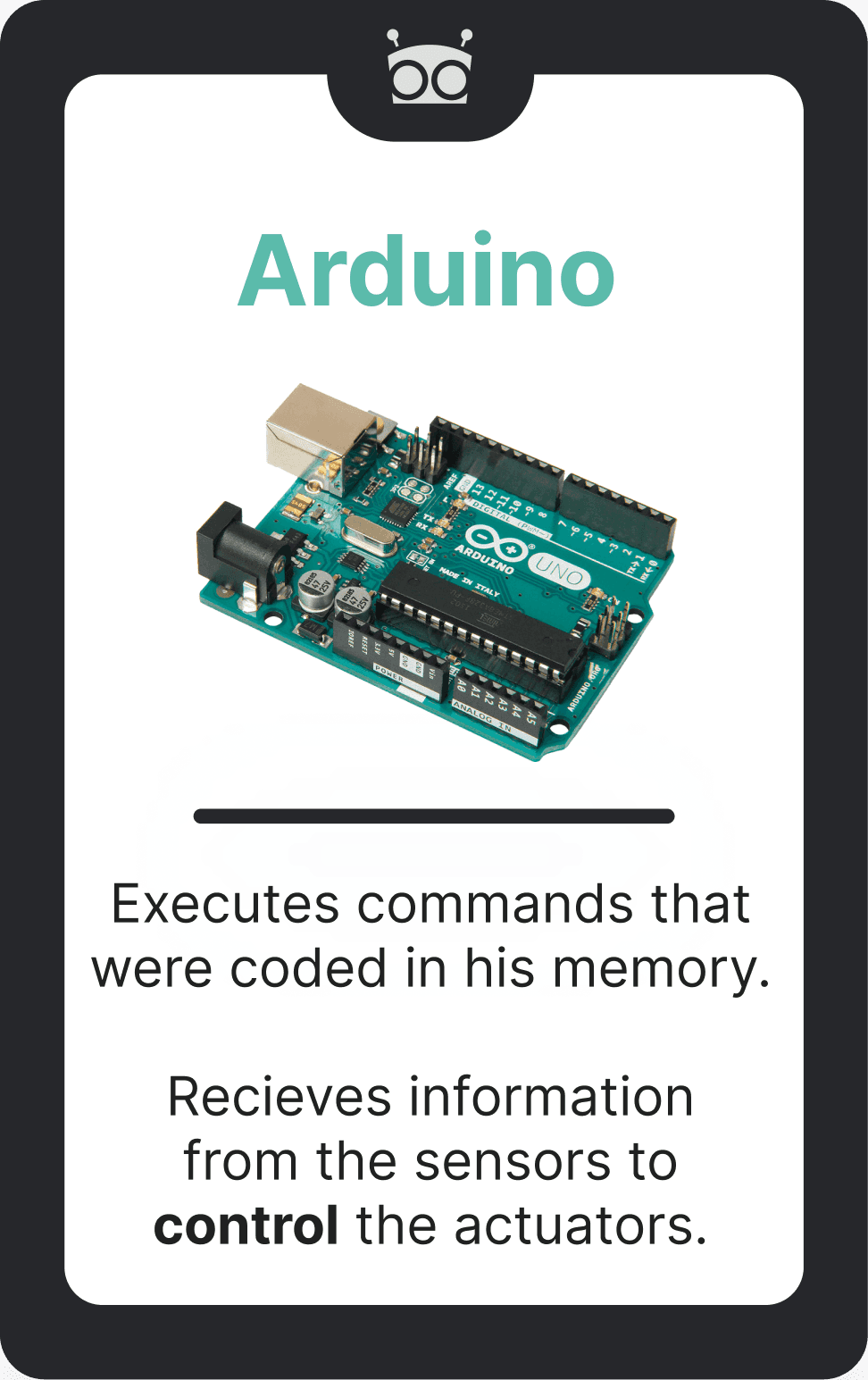



Game 1 taught that there are 4 basic component categories, along with their respective function, and it’s a simple memory game.
Each card is two sided (black ones), and introduces a component along with its function by having them perform an action. This is called embodied learning: knowledge is far better-retained when movement is linked to the learning process.
Finally, all cards are grouped by their respective category (green cards). In this case, the Arduino is a controller.
Game 1 taught that there are 4 basic component categories, along with their respective function, and it’s a simple memory game.
Each card is two sided (black ones), and introduces a component along with its function by having them perform an action. This is called embodied learning: knowledge is far better-retained when movement is linked to the learning process.
Finally, all cards are grouped by their respective category (green cards). In this case, the Arduino is a controller.



Game 2 presented a leaflet with a specific set of instructions for a robot to follow.
Game 2 presented a leaflet with a specific set of instructions for a robot to follow.

Students then had 10 cards with commands (cards from A to J), from which they could only choose 4, that when arranged in order, formed the proper code to program their robot and complete their given task.
Students then had 10 cards with commands (cards from A to J), from which they could only choose 4, that when arranged in order, formed the proper code to program their robot and complete their given task.


Each card had a confirmation message on its reverse, so the first step was to try to put together a logic code. Then, they had to turn around their cards to verify their answer.
In case of an error, the card would let them know what went wrong so they could try again with the remaining cards on the deck.
Each card had a confirmation message on its reverse, so the first step was to try to put together a logic code. Then, they had to turn around their cards to verify their answer.
In case of an error, the card would let them know what went wrong so they could try again with the remaining cards on the deck.
Once they had the correct code sequence, they could try it out.
Changing the code usually means that you have to get a cable, plug in the Arduino, modify the instructions, and so on... This experience was meant to be enjoyed by high school students, who would have no idea how to write code, so we made it easy, interactive, and playful.
Changing the code usually means that you have to get a cable, plug in the Arduino, modify the instructions, and so on... This experience was meant to be enjoyed by high school students, who would have no idea how to write code, so we made it easy, interactive, and playful.
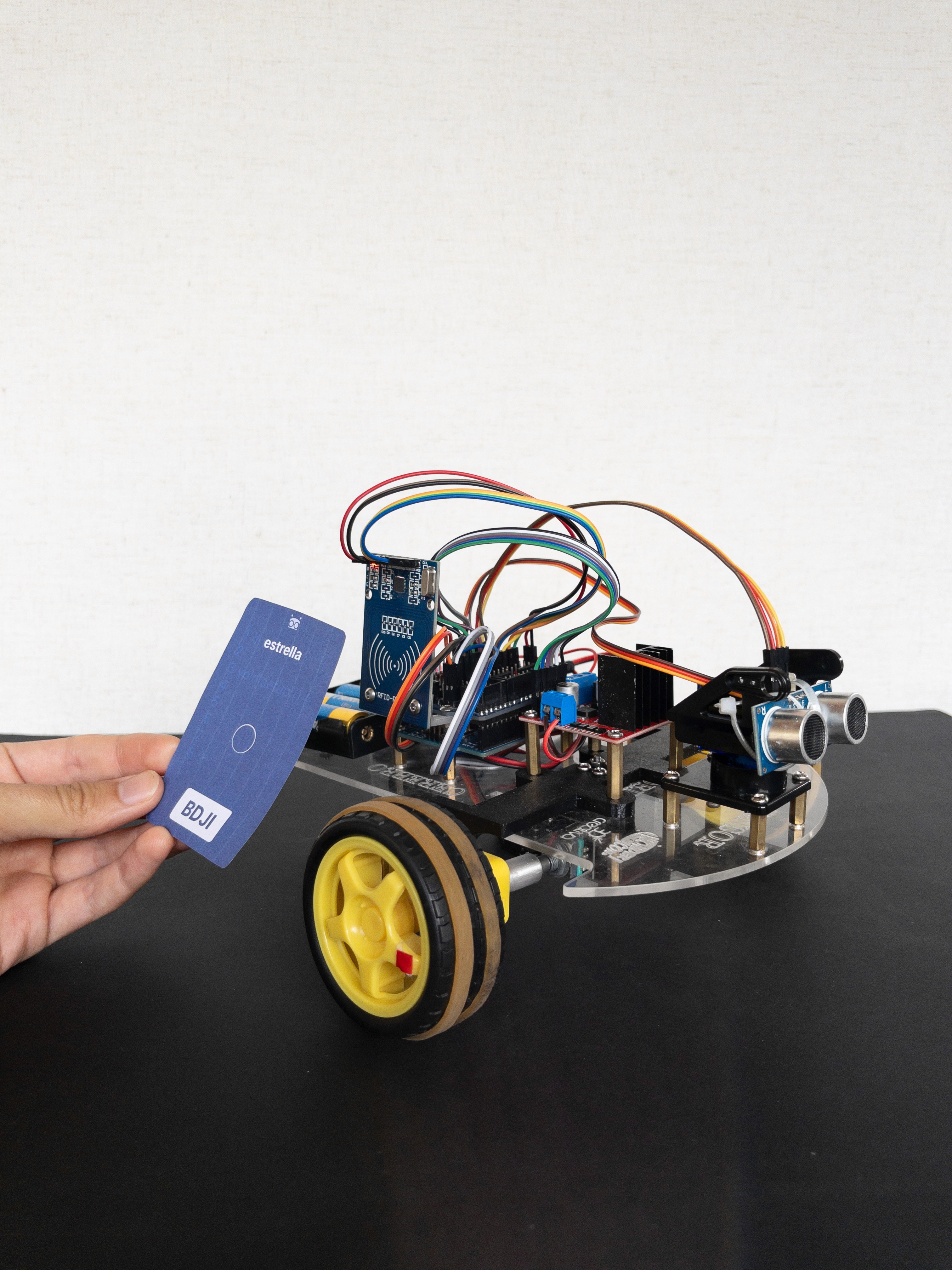

This was accomplished through the use of RFID technology, by integrating a reader to the robot, which we named Mambo. He was specially programed so that when students came close with their solution from the deck of code (which had an RFID sticker), Mambo would start up and follow the path of a geometric shape. In this case, a star.
This was accomplished through the use of RFID technology, by integrating a reader to the robot, which we named Mambo. He was specially programed so that when students came close with their solution from the deck of code (which had an RFID sticker), Mambo would start up and follow the path of a geometric shape. In this case, a star.
Over 2 weeks, we visited various high schools to test out our rapid prototype.
We took simple home-prints that were used to test semantics, instruction writing, and general understanding of the the dynamics. Each morning we tested, and each afternoon we modified everything to take a new and improved upon version the next day to the next school.
The game was iterated upon 7 times and each one included a pretest and posttest for the students to take in order for us to measure the actual learning impact that was being generated from the experience.
We took simple home-prints that were used to test semantics, instruction writing, and general understanding of the the dynamics. Each morning we tested, and each afternoon we modified everything to take a new and improved upon version the next day to the next school.
The game was iterated upon 7 times and each one included a pretest and posttest for the students to take in order for us to measure the actual learning impact that was being generated from the experience.
